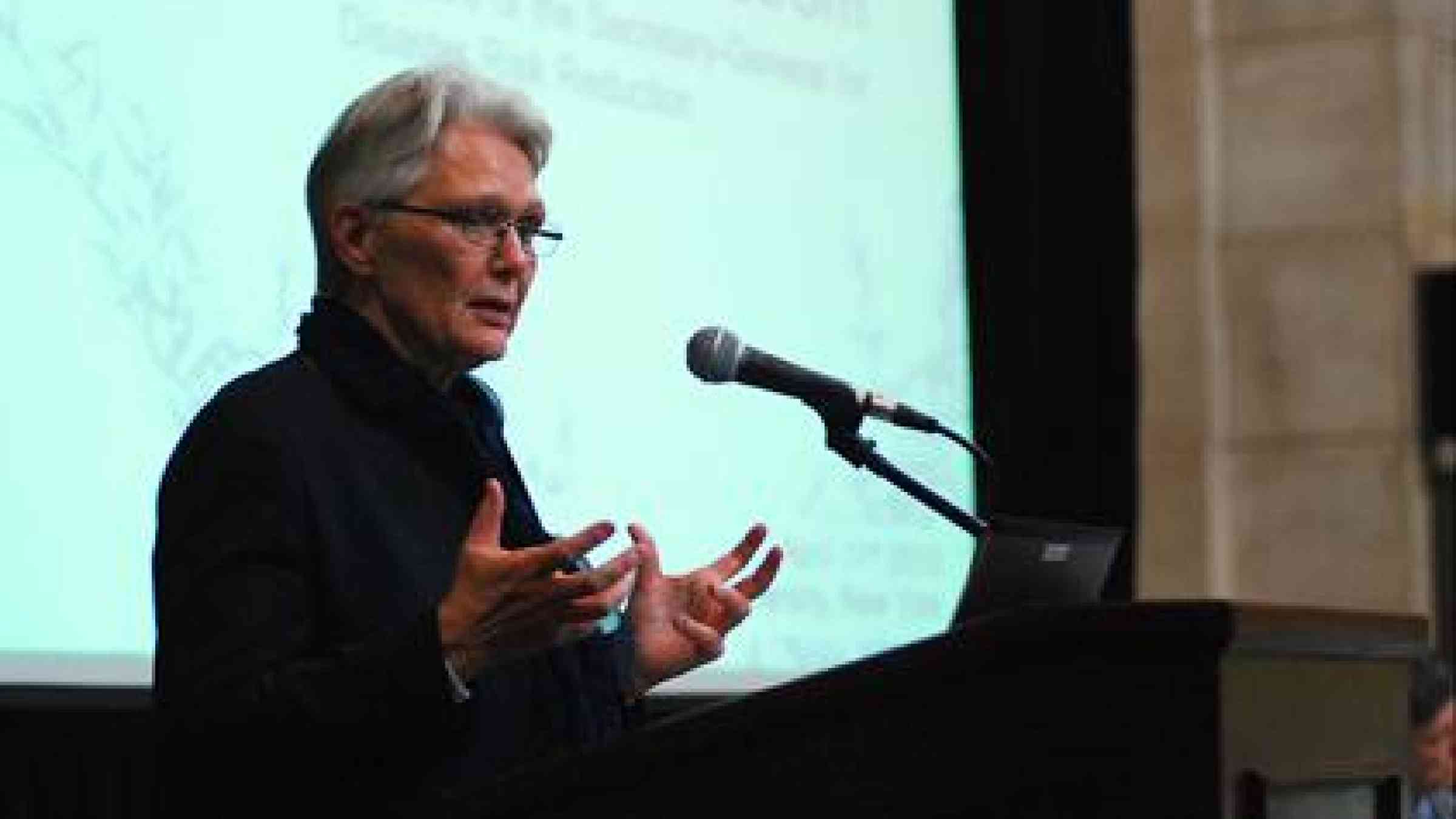
Speech of SRSG Margareta Wahlström, 11 of June 2015, on the 6th meeting of the Convention on the Rights of Persons with Disabilities, Conference of States Parties, Eighth session
Thank You Mr. Chairperson, Excellencies and Colleagues; I would like to thank my fellow panelists for already highlighting the Sendai Framework as a major achievement in breaking down barriers.
The Sendai Framework was agreed two months ago in middle of March in Sendai, Japan as part of the outcome of the Third UN World Conference for Disaster Risk Reduction. Just last week, it was endorsed by the UN General Assembly. The Sendai Framework provides for a major shift in the way countries look at disaster from focusing on the disaster as an event to focusing on the risk of disaster and what needs to be done to prevent, mitigate and reduce those risks; which broadens the agenda considerably, and is also intended to enhance coherence with the other U.N. instruments that are being negotiated this year.
The Sendai Framework sets seven global targets which are particularly important for the subject matter of today’s discussion. They pertain to reducing the loss of lives in disasters, reducing economic losses to global GDP, reducing the impact on social and critically infrastructure, establishing risk informed national and local plans, and enhancing the accessibility and availability on early warning systems.
The Sendai Framework builds, of course, very strongly on its predecessor, the Hyogo Framework for Action which was adopted in 2005, in Kobe, just after the Indian Ocean Tsunami, which for many of us was an alarming confrontation with the special situation of persons with disabilities in disasters and particularly in major global disasters.
The Sendai Framework pays amplified attention to the issue of disability and its impact on disaster situations in many parts of the text. This is thanks to the disability associations and groups from around the world, who contributed actively to make this possible. It is very much their achievement and of course the achievement of States who readily accepted these recommendations.
The Framework calls for a non-discriminatory and rights based approach to disaster risk work together with all persons, including persons with disabilities. It also directly and explicitly calls on persons with disabilities and their organizations to assess disaster risk and stresses the importance of their involvement in designing and implementing plans. It also calls on persons with disabilities to take leadership in “building back better”, in publicly leading and promoting universal accessible response, recovery, rehabilitation and reconstruction approaches.
On disaggregated data, which is very necessary indeed, the Framework calls for a multi-hazard approach with inclusive risk informed decision-making based on an open exchange and dissemination of disaggregated data, including “by disability”. The emphasis on accessibility and availability of data is a core element of this framework because risk-informed people take better decisions.
Equally importantly, the Framework calls for strengthening disaster resilient public and private investments through proper design and construction, including through the use of the principles of the universal design. This is a concept that is defined by the Convention on the Rights of Persons with Disabilities that guides the design of products, environments, programs and services to be inherently usable by all people without the need to specialize or adapt.
UNISDR remains committed to ensuring that disability is included in disaster loss databases, in the monitoring machinery and the follow up mechanisms that will now be gradually put in place. Of course, international agreements are necessary but not sufficient to achieve a fully inclusive process on disaster risk reduction planning, implementation, and evaluation. Results will be achieved if the principles of Sendai Framework become a reality at the community level and institutional level.
The Third UN World Conference on Disaster Risk Reduction strived, and succeeded, to increase inclusion, and has been recognized as one of the most accessible international gatherings convened by the UN that is not focused solely on disability. More than 200 persons with disabilities participated in the conference and all the official meetings were held with closed-captioning and sign interpretation. Equally, over 50 pre-conference and post-conference documents were provided in accessible format. Mentions must also be made on the strong commitment of the host city, Sendai city, and of course, the government of Japan. We also learned some valuable lessons through active feedback of the participants, so that the next conference can be even more inclusive and successful.
The disability community and its representatives have been very active participants in the global and regional platforms on disaster risk reduction over the past six years. Their engagement and participation made a very significant and positive impact on the way disability and disasters are thought of. I hope that a similar engagement continues in the follow up and implementation of the Sendai Framework.
I would, once again, like to thank all those who contributed to make the Conference and the Sendai Framework possible as an instrument that clearly and specifically integrates the perspectives of persons with disabilities. Thank you.